#Treves
Explore tagged Tumblr posts
Video
Hotel Porta Nigra luggage label by totallymystified Via Flickr: Trier, Germany.
#Hotel#Porta Nigra#Trier#Treves#Germany#luggage#label#retro#vintage#nostalgia#travel#ephemera#flickr
2 notes
·
View notes
Text
“ Quando una popolana napoletana non ha figli, essa non si addolora segretamente della sua sterilità, non fa una cura mirabile per guarirne, come le sposine aristocratiche, non alleva un cagnolino o una gattina o un pappagallo, come le sposette della borghesia. Una mattina di domenica ella, si avvia, con suo marito, all'Annunziata, dove sono riunite le trovatelle, e fra le bimbe e i bimbi, allora svezzati o grandicelli, ella ne sceglie uno con cui ha più simpatizzato, e, fatta la dichiarazione al governatore della pia opera, porta con sè, trionfante, la piccola figlia della Madonna. Questa creaturina, non sua, ella l'ama come se l'avesse messa al mondo; ella soffre di vederla soffrire, per malattia o per miseria, come se fossero viscere sue; nella piccola umanità infantile napoletana, i più battuti sono certamente i figli legittimi; di battere una figlia di Maria, ognuno ha un certo ritegno; una certa pietà gentilissima fa esclamare alla madre adottiva: puverella, non aggio core de la vattere, è figlia della Madonna. Se questa creatura fiorisce in salute e in bellezza, la madre ne va gloriosa come di opera sua, cerca di mandarla a scuola o almeno da una sarta per imparare a cucire, poiché certamente, per la sua bellezza, la bimba è figlia di un principe; in nessun caso di miseria o infermità, la madre adottiva riporta, come potrebbe, la figliuola all'Annunziata. E l'affezione, scambievole, è profonda, come se realmente fosse filiale; e a una certa età il ricordo dell'Annunziata scompare, e questa madre fittizia acquista realmente una figliuola. Ma vi è di più: una madre ha cinque figli. Il più piccolo ammala gravemente, ella si vota alla Madonna, perché suo figlio guarisca; ella adotterà una creatura trovatella. Il figlio muore; ma la pia madre, portando il fazzoletto nero che è tutto il suo lutto, compie il voto, lagrimando. Così, a poco a poco, la creatura viva e bella consola la madre della creatura morta, e vi resta in lei solo una dolcezza di ricordo e vi fiorisce una gratitudine grande per la figlia della Madonna. Talvolta, il figlio guarisce: il primo giorno in cui può uscire, la madre se lo toglie in collo e lo porta alla chiesa dell'Annunziata, gli fa baciare l'altare, poi vanno dentro a scegliere la sorellina o il fratellino. E fra i cinque o sei figli legittimi, la povera trovatella non sente mai di essere un'intrusa, non è mai minacciata di essere cacciata, mangia come gli altri mangiano, lavora come gli altri lavorano, i fratelli la sorvegliano perché non s'innamori di qualche scapestrato, ella si marita e piange dirottamente, quando parte dalla casa e vi ritorna sempre, come a rifugio e a conforto. “
Matilde Serao, Il ventre di Napoli. (Corsivi dell’autrice)
[Edizione originale: fratelli Treves, Milano, 1884]
#Matilde Serao#Il ventre di Napoli#XIX secolo#citazioni#libri#Italia meridionale#Meridione#scrittrici#giornalismo#Treves#intellettuali dell'800#Campania#Mezzogiorno#Storia d'Italia#questione meridionale#arrangiarsi#saggistica#plebe#Sud#Agostino Depretis#popolino#Regno d'Italia#Sinistra storica#letteratura meridionale#classi popolari#generosità#orfani#pietà#amore#famiglia
28 notes
·
View notes
Text
me: Apologies to Sir Frederick Treves but this fic takes place in an AU where Harry Goodsir performs a successful appendectomy fifty years ahead of schedule.
tumblr: haha yeah because Paul Ready played both of them on TV




me: [a guy who has seen Ripper Street more times than he's seen The Terror] ...yes. i meant to do this. on purpose.
#i did not do it on purpose#it's a happy appendicitis accident#paul ready#sir frederick treves#harry goodsir#the terror#ripper street#amc the terror#the terror amc#in my defense they have opposite facial hair#and most of my Ripper Street viewing was fast forwarding to the Fred Best scenes
49 notes
·
View notes
Text



David Bowie as John Merrick in The Elephant Man, c. 1980 Photographer: Jim Britt
#(and with donal donnelly as Frederick Treves)#I say c. 1980 bc these were taken during the filming for an episode of Omnibus#which I believe aired in 1981 (and quite possibly was filmed in 1981)#but since the majority of bowie's run as merrick was in 1980 it just makes sense to say c. 1980 y'know#david bowie#bowieposting#the elephant man#80s#posted a couple of these on instagram initially but I like them so I'm posting them here too
77 notes
·
View notes
Text
I need everyone to watch this right now please
#something about dorky british women is sooo#to me.#like she's my ideal woman#and shes only 4 years older than me wait omg#hello molly rose please call me#the faux bravado of 'the other kids didnt like me so i left'#then her demonstration of her moves#the casual reveal of 'sniffing em and stuff'#then sully's high-pitched 'sniffing em and stuff??'#ive noticed in a couple videos sully seems to find molly rose really funny#i think that's sweet#her response when jon asks if she really sniffed other kids#'yea yea yea' 'did you?' 'no.' 'did you-' 'maybe 🤪'#the immediate 'i dont think it was in a dojo'#the callback to joking about her being 27#i love you nrb#no rolls barred#molly rose treves my number is-
42 notes
·
View notes
Text
1 Marzo 25
2 notes
·
View notes
Note
yoooooooo new url fuck i lost the emoji button on my laptop uhhhh thumbs up emoji. stay woke
yeaaaaa new url it's very cool and epic thank u for the thumb in return u get free thumb emoji 👍 also stay woke friend
3 notes
·
View notes
Text
Supernatural Fanfiction
Not All Good News by trevelies
Michael is caged inside Dean's mind for now. But there's grace leaking from the cracks, banging on the doors, and Dean knows what happens at the end of this story. With borrowed (and confusing) Archangel abilities, a group of mistrustful Apocalypse Universe Hunters, and too many Michael Monsters to deal with, Team Free Will 2.0 is ready to clean up the mess that Michael's left behind and stop another apocalypse. Not all the danger is locked inside a bar's walk-in freezer, though - and the Winchesters need to watch out for old and new enemies around every corner.
And at the end of it all, Dean needs to decide how far he'll go to get rid of Michael once and for all.
Chapters 52/?
#trevelies#ao3 fanfic#dean fic#michael possessing dean#angel dean#supernatural season 14#alternate universe#really good fic#supernatural#dean winchester#spn dean#spn#spn season 14#michael!dean#gen fanfic
4 notes
·
View notes
Text

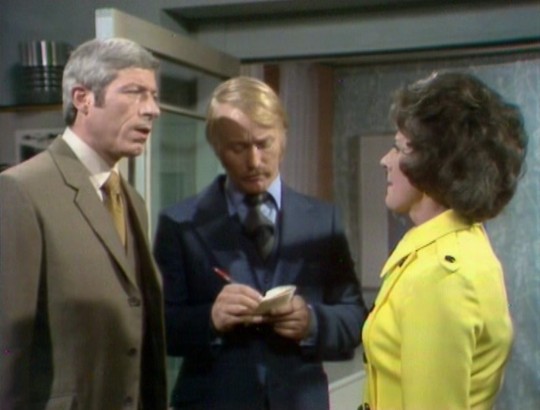




New Scotland Yard: And When You're Wrong (1.13, LWT, 1972)
"You sent for me."
"I sent for you four days ago."
"I didn't get the message till yesterday."
"Right, you can put your diary down. Where have you been?"
"Busy."
"Doing what?"
"You know what I'm doing."
"I know what you're supposed to be doing, nobody seems to know what you're actually doing."
"You'll have my report when it's all wrapped up."
"I'll have it now. Whatever you were playing at before, you're now a witness in a murder case."
#new scotland yard#and when you're wrong#1972#classic tv#alun falconer#bryan izzard#john woodvine#john carlisle#jeremy wilkin#sheila fearn#robert fyfe#frederick treves#keith marsh#leon sinden#tony caunter#yvonne manners#david king#john tatham#a good attempt at a dramatic season finále but it fluffs a couple of key moments and never quite gels together as it should have#Carlisle's sneering‚ increasingly bullyish DI is involved in a high end art theft case‚ tho the degree to which he's involved (and on which#side of the law) is quite cleverly obscured; up until about the halfway mark anyway (one of those fluffed moments i mentioned; it would#have been far more effective to keep us guessing right through). things are complicated by the murder of his informant‚ and then further#complicated by an array of suspects and third parties‚ all just a little larger than life (Treves makes for a wonderfully dithering and#almost edwardian style co conspirator). that's part of the problem‚ that the colourful characters in the case are just a little at odds#with the more serious tone that a potentially corrupt main character should provoke. Woodvine mostly struts around being very annoyed at#proceedings but he is notably sympathetic towards Fearn's (implied) sex worker and even subtly provides some legal advice at the close#with Carlisle busy being partly the subject of investigation‚ his place is taken for this ep by the lovely Wilkin sporting quite a 'tache#oh and it may not come across in text but the quote above quite takes you aback for the sheer lack of respect bordering on relaxed contempt#that Carlisle shows his immediate supervisor (the way he nails that 'You know what I'm doing' with arch disinterest.. the character may be#a shit but give him his dues‚ Carlisle plays it incredibly)
1 note
·
View note
Text
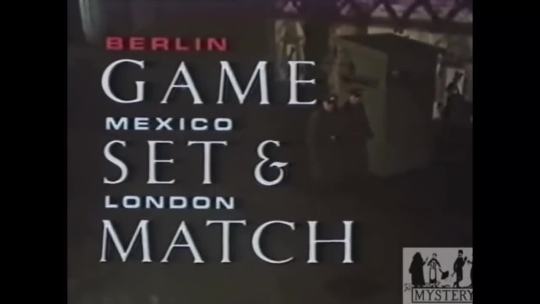
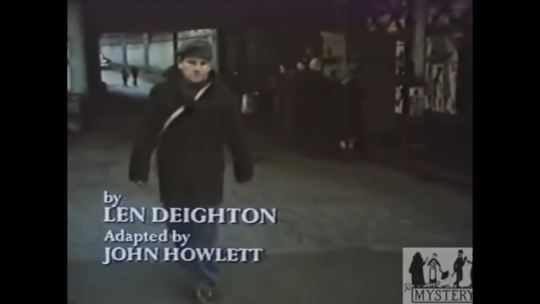

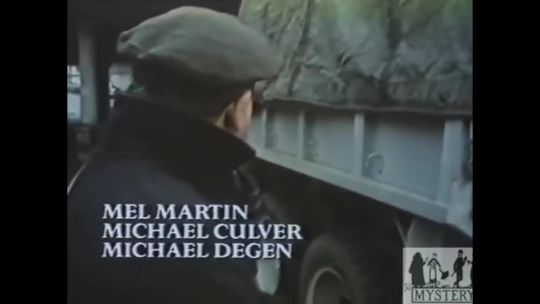
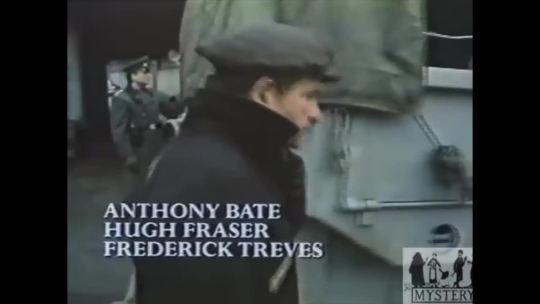




Game, Set and Match - ITV - October 3, 1988 - December 19, 1988 / PBS - March 23, 1989 - June 8, 1989
Drama (13 Episodes)
Running Time: 60 minutes
Stars:
Ian Holm as Bernard Samson
Mel Martin as Fiona Samson
Michael Culver as Dicky Cruyer
Michael Degen as Werner Volkmann
Gottfried John as Eric Stinnes
Anthony Bate as Bret Renssalaer
Frederick Treves as Frank Harrington
Amanda Donohoe as Gloria Kent
Hugh Fraser as Giles Trent
Gail Harrison as Tessa Kozinski
Gary Whelan as George Kozinski
Brigitte Karner as Zena Volkmann
Alan MacNaughtan as Sir Henry Clevemore DG
Michael Aldridge as Silas Gaunt
Peter Vaughan as David Kimber-Hutchinson
Eva Ebner as Frau Lisl Hennig
Jeremy Child as Henry Tiptree
Ralf Wolter as Juri Rostov
#Game Set Match#TV#ITV#PBS#1988#1989#1980's#Drama#Ian Holm#Mel Martin#Michael Culver#Michael Degen#Anthony Bate#Frederick Treves
3 notes
·
View notes
Text

Salvador "Sass" Treves - founder of Sass Cafe and former junior member of the Monegasque Red Cross, presented a magic trick to Princess Grace of Monaco during the inauguration of the junior's work exhibition (unknown date, probably circa 1963).
#grace kelly#princess grace#grace de monaco#princesse grace#salvador treves#sass cafe#red cross#junior#1960s#1963#1964#1965
6 notes
·
View notes
Text
“ Del miracolo di san Gennaro, fate le alte meraviglie? Quelle vecchie abitanti del Molo che si pretendono sue discendenti, che invadono l'altare maggiore, che non lasciano accostarsi nessuno, gridano il Credo, mentre si attende il miracolo, e ogni volta che ricominciano, alzano il tono, sino all'urlo, che si dimenano come ossesse, che lo gratificano di vecchio dispettoso, vecchio impertinente, faccia verde; vi stupiscono? Vi è il piede di sant'Anna che si mette sul ventre delle partorienti, che non possono procreare il figlio; vi è l'olio che arde nella lampada, innanzi al corpo di san Giacomo della Marca, nella chiesa di Santa Maria la Nuova, che fa guarire i mali di testa; vi è il Crocifisso del Carmine che ha fatto sangue dalle piaghe; vi è il bastone di san Pietro che si venera nella chiesa sotterranea di Sant'Aspreno, primo vescovo di Napoli, ai Mercanti; vi è l'acqua benedetta di San Biagio ai Librai che guarisce il mal di gola; vi sono le panelle, pagnottine di pane benedette di San Nicola di Bari, che buttate in aria, nel temporale, scampano dalle folgori. Vi sono centinaia di ossicini, di pezzetti di velo, di pezzetti di vestito, di frammenti di legno, che sono reliquie. Ogni napoletana porta al collo o sospeso alla cintura, o ha sotto il cuscino, un sacchettino di reliquie, di preghiere stampate: questo sacchettino si attacca alle fasce del bimbo, appena nato. Credete che al napoletano basti la Madonna del Carmine? Io ho contati duecentocinquanta appellativi alla Vergine, e non sono tutti. Quattro o cinque tengono il primato. Quando una napoletana è ammalata o corre un grave pericolo, uno dei suoi, si vota a una di queste Madonne. Dopo scioglie il voto, portandone il vestito, un abito nuovo, benedetto in chiesa, che non si deve smettere, se non quando è logoro. Per l'Addolorata il vestito è nero, coi nastri bianchi; per la Madonna del Carmine, è color pulce coi nastri bianchi; per l'Immacolata Concezione, bianco coi nastri azzurri; per la Madonna della Saletta, bianco coi nastri rosa. Quando non hanno i danari per farsi il vestito, si fanno il grembiule; quando mancano di sciogliere il voto, aspettano delle sventure in casa. “
Matilde Serao, Il ventre di Napoli. (Corsivi dell’autrice)
[Edizione originale: fratelli Treves, Milano, 1884]
#Matilde Serao#Il ventre di Napoli#XIX secolo#citazioni#libri#Italia meridionale#Meridione#scrittrici#giornalismo#Treves#intellettuali dell'800#Campania#Mezzogiorno#Storia d'Italia#questione meridionale#San Gennaro#Chiesa cattolica#fede#tradizioni culturali#devozione#cattolicesimo#miracoli#Sud#venerazione popolare#scritti saggistici#classi popolari#plebe#superstizione#dogmi#CICAP
8 notes
·
View notes
Text
oh hey that's the Dolmen de la Bajouliere

#it's off the Loire about halfway between Saumur and Angers#I've cycled there from Treves-Cunault it's lovely
11K notes
·
View notes
Photo

PRIMA PAGINA Le Monde di Oggi venerdì, 14 marzo 2025
#PrimaPagina#lemonde quotidiano#giornale#primepagine#frontpage#nazionali#internazionali#news#inedicola#oggi raconte#histoires#livres#zones#grises#treve#americaine#lors#presse#dans#discussions#president#pris#garde#heurter#jamais#territoires#troupes#semblent#region#visite
0 notes
Text
La demande inhabituelle du Hamas qui pourrait faire échouer l'accord sur les otages
Les discussions entre le représentant américain Adam Boehler et le Hamas ont mis en lumière une exigence clé du groupe terroriste : la question de son arsenal militaire dans la bande de Gaza. Selon le journal arabe Al-Arabi Al-Jadeed, affilié au Qatar, le Hamas a exprimé sa disposition à négocier sur son armement offensif en échange d’une trêve prolongée et du retrait total des forces…
0 notes
